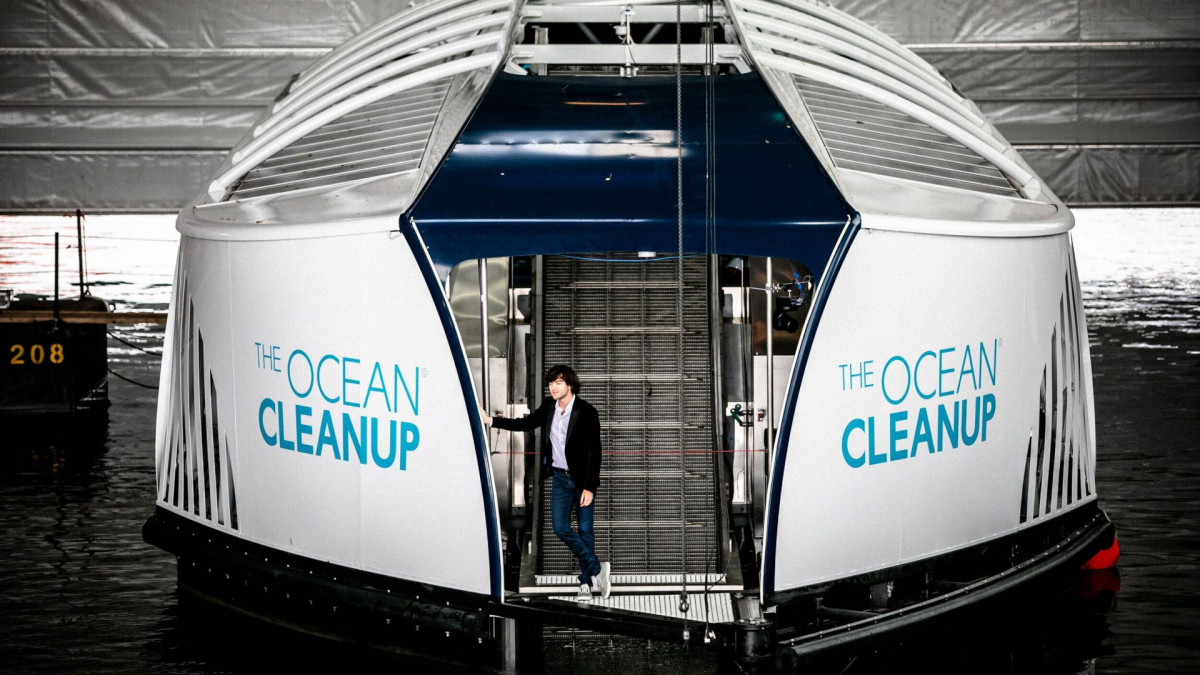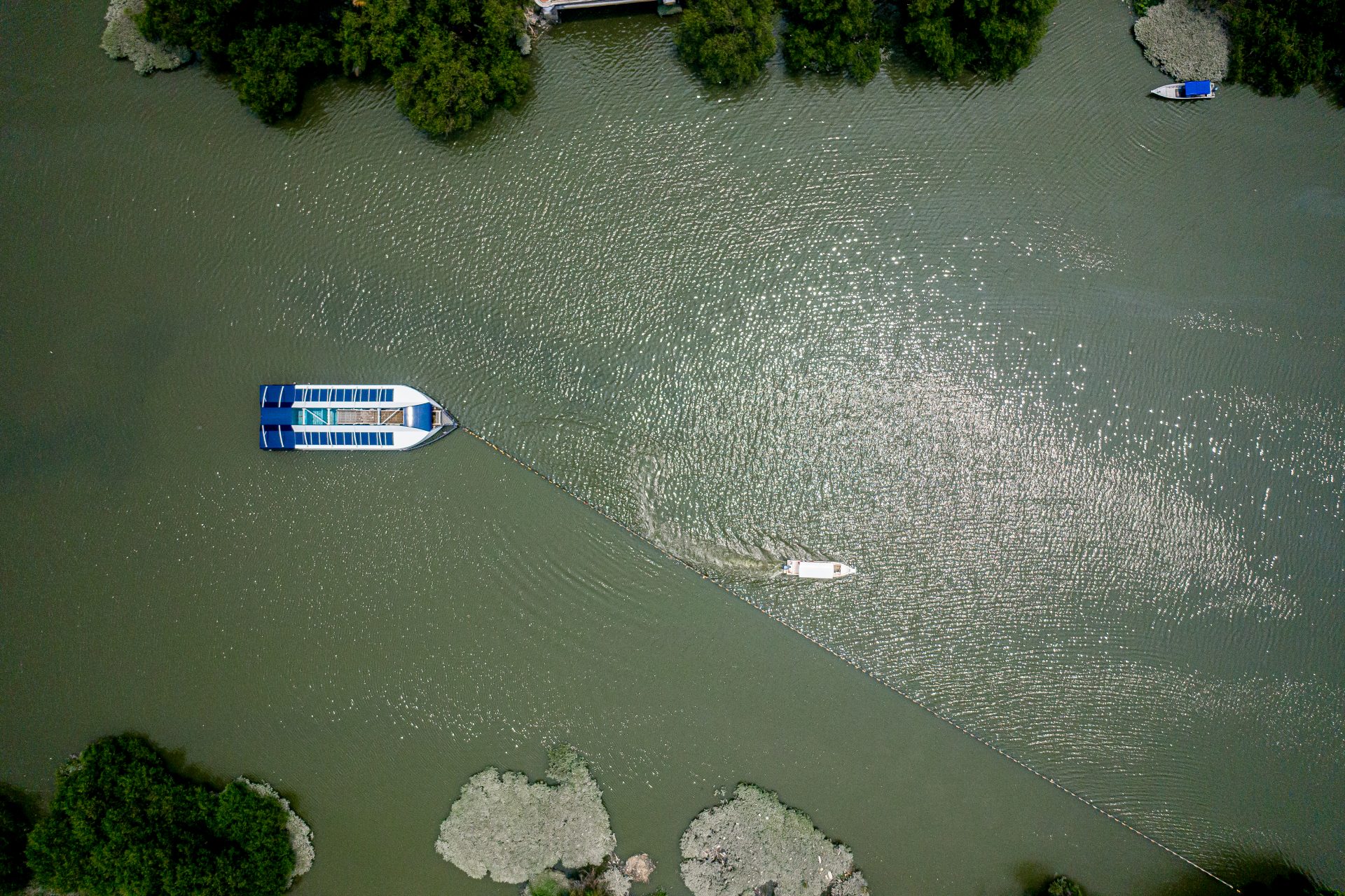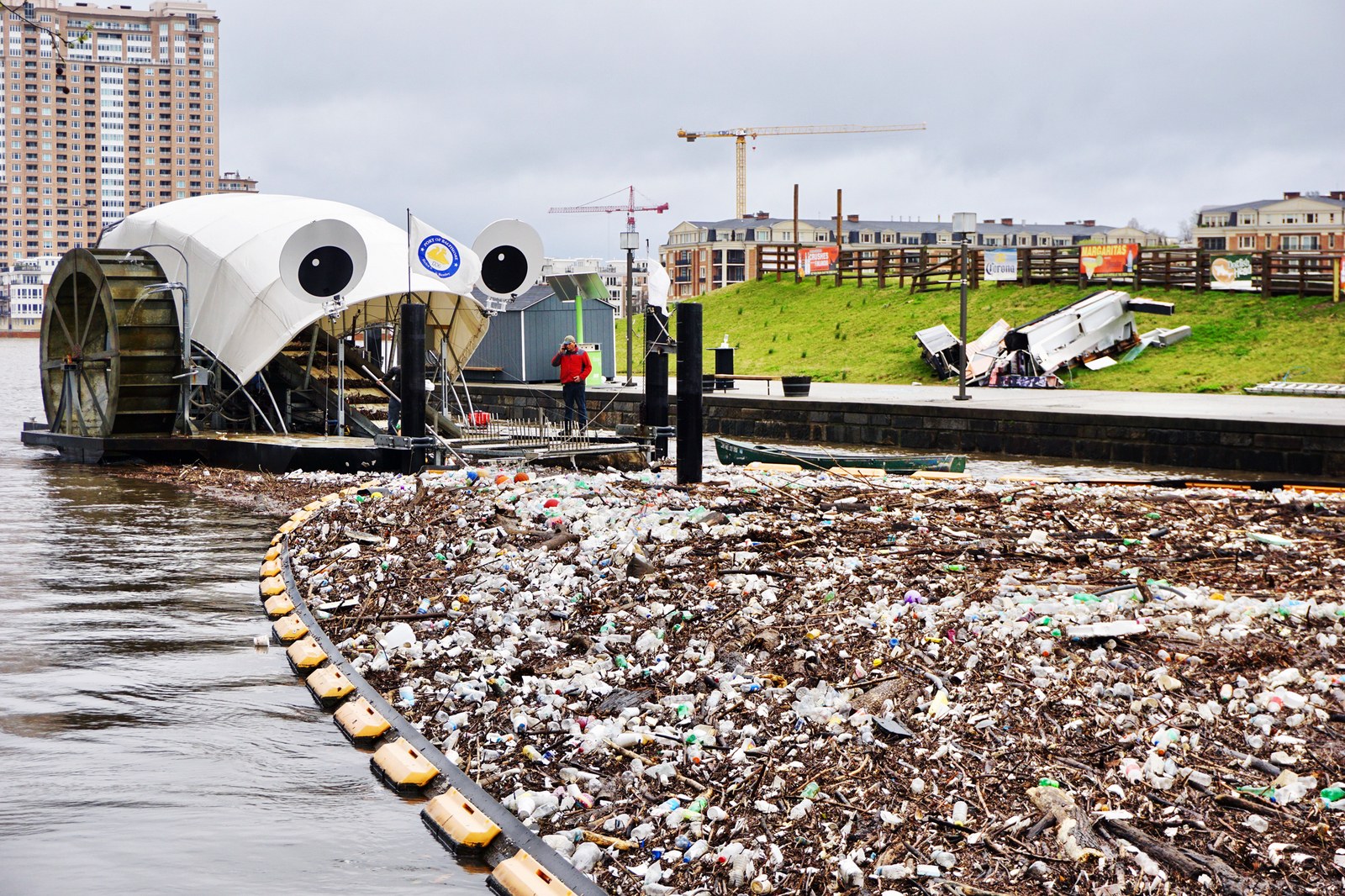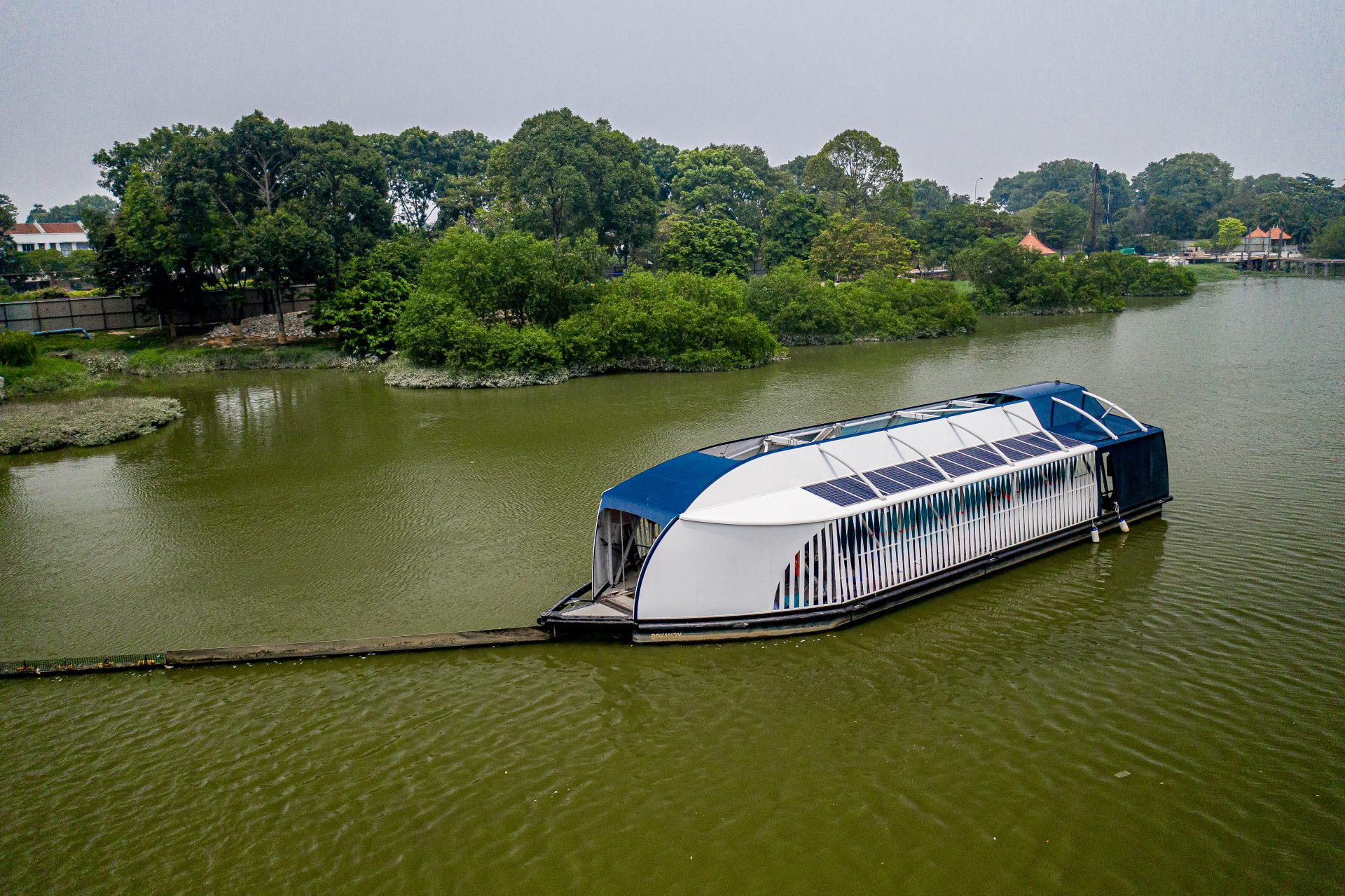
- Sustainable Planet -
- 6mins -
- 1,120 views
The Ocean Cleanup’s Fleet of solar powered “INTERCEPTORS” to clean the world’s polluted rivers
Boyan Slat introduces The Interceptor™— the first scalable solution to intercept river plastic pollution — which can be deployed around the world and is capable of extracting between 50 and 100 tonnes of trash per day.
The Ocean Cleanup aims to tackle world’s 1,000 most polluting rivers before the end of 2025
To rid the oceans of plastic, we need to not only clean up what is already out there, but also stop new plastic from entering the ocean: we need to close the tap. The Ocean Cleanup, the Dutch non-profit organisation developing advanced technologies to rid the world’s oceans of plastic, yesterday unveiled its invention to prevent the unrelenting flow of plastic pollution into the world’s oceans. The Interceptor™, under development by The Ocean Cleanup since 2015, complements the organisation’s founding mission by attacking the flow of plastic garbage at its source, the world’s vast network of rivers. The Ocean Cleanup aims to tackle the 1,000 most polluting rivers, responsible for about 80% of ocean plastic pollution, before the end of 2025.

BOYAN SLAT UNVEILS PLAN TO ADDRESS THE MAIN SOURCE OF OCEAN PLASTIC POLLUTION: RIVERS
“To truly rid the oceans of plastic, we need to both clean up the legacy and close the tap, preventing more plastic from reaching the oceans in the first place. Combining our ocean cleanup technology with the Interceptor, the solutions now exist to address both sides of the equation,” said Boyan Slat, Founder and CEO of The Ocean Cleanup, at the unveiling in Rotterdam on Saturday.
So far four Interceptors have been built; with two systems already operational in Jakarta (Indonesia) and Klang (Malaysia). A third system is in Vietnam to be installed in Can Tho in the Mekong Delta (Vietnam), while the fourth is destined to be deployed in Santo Domingo (Dominican Republic). In addition to these locations, Thailand has signed up to deploy an Interceptor near Bangkok, and further agreements are nearing completion including one in LA County (USA), kick-starting the scale-up.
As part of The Ocean Cleanup’s research to map the problem, it was established that 1,000 of the world’s 100,000 rivers (1%) are responsible for roughly 80% of the garbage entering the oceans. The product of their global scientific measurement and modeling efforts has been visualised in an interactive map that is accessible here.

Interceptors are a scalable and affordable solution to address a global problem
The Ocean Cleanup Interceptor™ is environmentally friendly and 100% solar-powered, with onboard lithium-ion batteries that enable it to operate day and night without any noise or exhaust fumes. The system is anchored to the riverbed to utilise the natural flow of the river to catch the plastic and is designed for 24/7 autonomous operation, removing the need for dangerous manual work. Its floating barrier that is used to direct the garbage into the system only spans part of the river; it will not interfere with other vessels and does not harm the safety, nor impede the movement of wildlife – critical requirements when operating in major rivers. An internet-connected onboard computer monitors the system’s performance, energy usage, and component health.

The Interceptor™
The Interceptor is The Ocean Cleanup’s answer for river plastic waste. It is the first scalable solution to prevent plastic from entering the world’s oceans from rivers. It is 100% solar-powered, extracts plastic autonomously, and is capable of operating in the majority of the world’s most polluting rivers.
How it works
A. Barrier: River waste flowing with the current is guided by the barrier towards the opening of the Interceptor. Thanks to the Interceptor’s catamaran design, the water flow path is optimised to pass through the system, carrying the plastic onto the conveyor belt.
B. Conveyor belt: The current moves the debris onto a conveyor belt, which continuously extracts the debris from the water and delivers the waste to the shuttle.
C. Shuttle: A shuttle automatically distributes the debris across six dumpsters. Using sensor data, the containers are filled equally until they reach full capacity.
D. Dumpsters: The Interceptor can store up to 50m³ (1766ft³) of trash before needing to be emptied. This means it’s capable of operating even in the most polluted rivers all over the world.
E. Empty and recycle: When the Interceptor is almost full, it automatically sends a text message to the local operators to come and collect the waste. Operators then remove the barge, bring it to the side of the river, empty the dumpsters, send off the debris to local waste management facilities, and return the barge back into the Interceptor.
Other features that make the Interceptors appealing include;
- Scalable: The Interceptor has been designed for mass production and can be applied virtually anywhere in the world.
- Energy neutral:The debris enters the Interceptor with the natural current of the river. All electronics on the Interceptor, including the conveyor belt, shuttle, lights, sensors, data transmission, are solar-powered.
- Connected: The Interceptors are internet-connected, allowing us to gather continuous performance and collection data. It also enables the Interceptor to automatically notify local operators once the dumpsters are full.
- 50,000 Kg/day: The Interceptor can extract 50,000 kilograms of plastic per day. In optimal conditions, up to double this amount can be achieved.
- 24/7 Operation: The Interceptor can work autonomously until it’s full and can continue extracting debris even when the dumpsters are being emptied.
- 50m³ Capacity: Its large storage capacity allows for efficient emptying cycles, filling entire garbage trucks at once.


What happens with the collected debris?
Boyan Slat commented on social media that the Interceptors are only deployed once they are assured that the captured debris does not end up back in the river. The debris will be sorted – what can be recycled will be recycled – and the rest goes to the best-available local waste management solution.
Impact on riverene life
On the FAQ section on their website they state that The Ocean Cleanup has commissioned third-party environmental impact assessments (EIA) with Royal Haskonig, Arcadis, and Witteveen en Bos for the deployment areas in question. The EIA results concluded that in all locations where an Interceptor™ is deployed, the negative impacts on the environment are negligible. For each deployment, they will conduct additional EIAs, which will be available upon request.
It is likely that there will be some harm done to riverine life. However, the question is what harm is bigger to riverine life; cleaning the debris as careful and thoughtful as they do or do nothing. We think the latter is most likely a lot worse.

